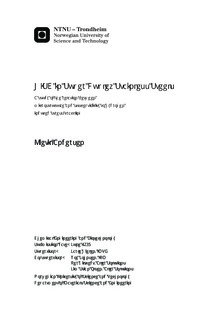| dc.contributor.advisor | Hjelen, Jarle | nb_NO |
| dc.contributor.advisor | Johnsen, Roy | nb_NO |
| dc.contributor.advisor | Giltvedt, Per | nb_NO |
| dc.contributor.advisor | Olsen, Jim Stian | nb_NO |
| dc.contributor.author | Andersen, Kjetil | nb_NO |
| dc.date.accessioned | 2014-12-19T13:27:25Z | |
| dc.date.available | 2014-12-19T13:27:25Z | |
| dc.date.created | 2013-09-19 | nb_NO |
| dc.date.issued | 2013 | nb_NO |
| dc.identifier | 649662 | nb_NO |
| dc.identifier | ntnudaim:9238 | nb_NO |
| dc.identifier.uri | http://hdl.handle.net/11250/249315 | |
| dc.description.abstract | Testing of susceptibility to hydrogen induced stress cracking (HISC) in two 25% Cr Super Duplex Stainless Steels (SDSS) has been carried out. These were a forged material and a hot isostatically pressed (HIP) material with austenite spacing 51.5 µm and 12.9 µm, respectively. The tests were carried out on both smooth and notched samples by stepwise increasing load in Cortest proof rings on hydrogen pre-charged samples until fracture. The fracture surfaces were examined in scanning electron microscopes (SEM) and the hydrogen contents were measured. The microstructures of the materials were examined with the electron backscattered diffraction technique (EBSD) and assessed in relation to the results from the HISC testing.The results indicated that both SDSS materials are prone to HISC and that the HIP material has a higher threshold for HISC. The fracture surface on samples of both materials showed features indicating reduced ductility from HISC. The HIP samples indicated ductile fracture in the centre, implying that hydrogen influence was primarily in close proximity of the sample surfaces. This observation, and considerably higher hydrogen content measured in the forged material, indicates slower hydrogen diffusion in the HIP material than in the forged material.The results obtained were discussed against the literature reviewed and compared to the requirements in DNV-RP-F112. Indication of low temperature creep was observed on smooth samples by relaxation of the load determining ring deflection. The results from smooth samples indicated a threshold for HISC fracture (after one day of low temperature creep) at 112.6% ± 3.9% of yield strength (YS) and 104.8% ± 3.1% for HIP and forged material, respectively. No ring relaxation occurred for the notched samples. Therefore the results from these samples indicated higher threshold for HISC than the smooth samples, namely at 117.1% ± 2.2% and 113.8% ± 2.2\% of YS for HIP and forged samples, respectively. | nb_NO |
| dc.language | eng | nb_NO |
| dc.publisher | Institutt for materialteknologi | nb_NO |
| dc.title | HISC in Super Duplex Stainless Steels: A study of the relation between microstructure and susceptibility to hydrogen induced stress cracking | nb_NO |
| dc.type | Master thesis | nb_NO |
| dc.source.pagenumber | 114 | nb_NO |
| dc.contributor.department | Norges teknisk-naturvitenskapelige universitet, Fakultet for naturvitenskap og teknologi, Institutt for materialteknologi | nb_NO |

